Wall paintings
It is almost certain that the entire walls of the church were painted in medieval times. Apart from wall paintings you can still clearly see at St Michael’s, numerous small traces of, mainly reddish, paint are present in various places, including on the chancel arch pillars within the chancel. These paint traces provide convincing evidence that in mediaeval times the church would be a riot of colour. Although hidden now behind the chancel panelling, the lower walls of the chancel are painted (at least in the sanctuary area). So it is safe to assume that while much of the early painting will have been removed over the centuries, under the present white wall paint lies much more medieval wall painting.
It was normal to have a picture of St Christopher carrying the infant Jesus on the north wall, facing the main entry/exit to the church. This would be the last thing to be seen by someone departing the building and be considered a safeguard from harm while travelling.
There is still no known method of preserving wall paintings – other than painting over them – so it is probably best that the white walls are left as they are for the time being. In the past, wall paintings in churches were kept fresh by regular touching up, so paradoxically, just to leave them as they are is a modern conceit.
Main wall painting
The largest area of wall painting is seen to the right of the chancel arch, dating from around 1300 or perhaps slightly later.
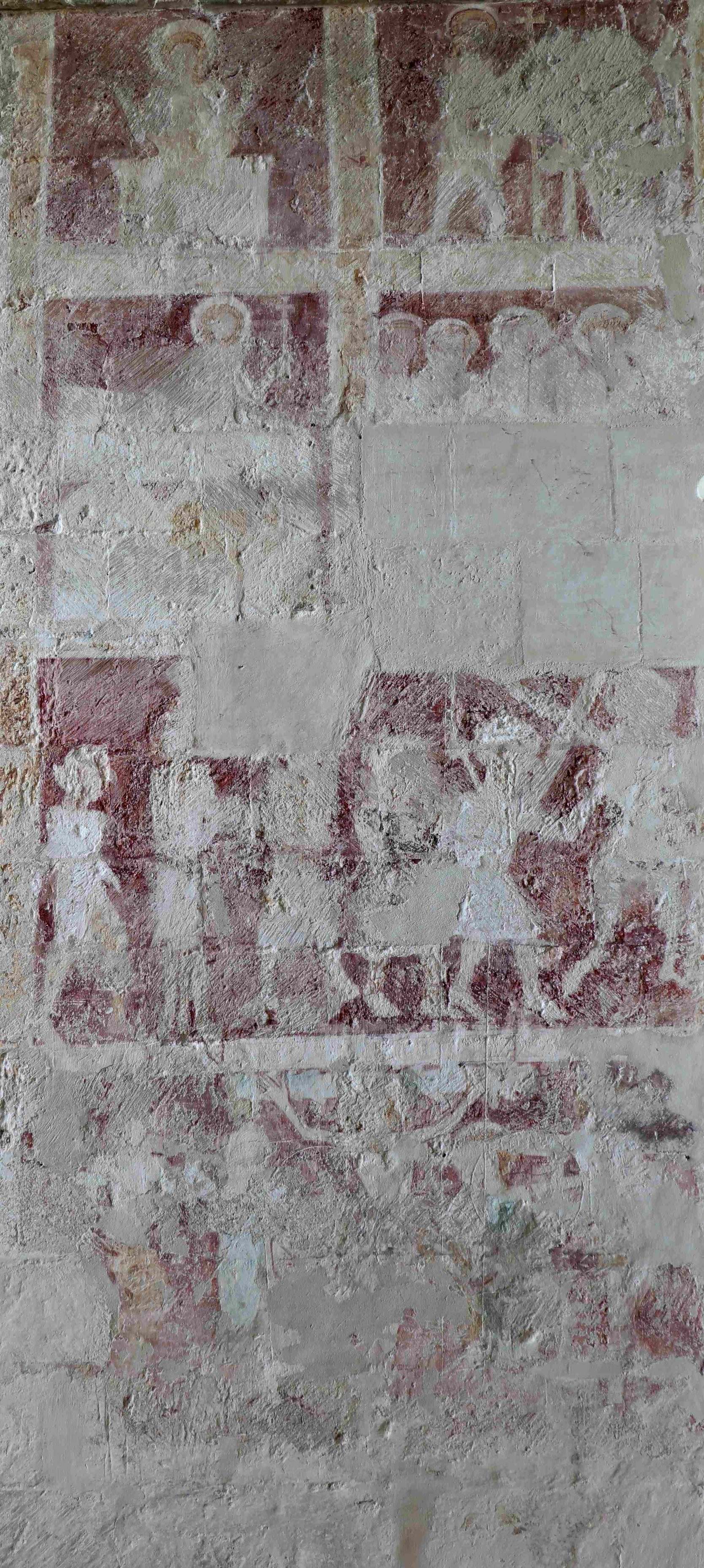
Main wall painting
Of the two upper panels, that on the left represents Christ in Majesty with the world, a globe with a cross imposed between His feet and His right-hand raised in blessing. The right panel, judging by the cross, appears to be a Resurrection appearance to a single person, perhaps Peter. In the two panels below, the left one represents the Resurrection with Christ rising from a stone tomb, with a cross in His hand. Below the tomb, in the arches, are two sleeping soldiers, one with a lance. (These are indistinct but clear in certain lights.) The right panel is a Resurrection appearance to the disciples, or to Thomas, although only the heads are now visible.
In the next panel down there are six figures in two groups of three. The group on the left represents the Flagellation with Christ in the middle, tied to a stake. On the right is the Procession to Calvary, with Christ carrying the cross while being pushed along by a soldier with a hammer.
The lowest panel represents the Crucifixion, with Christ in the middle, Mary on the left, and John on the right. There is a T-shaped cross on either side, with the thieves.
During Edward VI’s reign, around 1550 (the same time as the original pulpit and its window was installed), wall paintings were whitewashed over and texts deliberately painted over them to emphasise the importance of the Word of God in the new liturgy. Pictorial depictions of biblical events were deprecated. This painting was previously over-painted with a 16th century text from Hebrews 10, vv2-3 across it:
“For then would they not have ceased to be offered because that the worshippers once purged should have no more conscience of sins. But in those sacrifices there is a remembrance again made of sins every year.”
This text was removed in 1967, to expose the original painting.
Wall paintings in the aisle
The black letter text on the wall to the right of the east window in the south aisle is later than the figurative wall paintings at the side of the chancel arch. This text obscures an earlier wall painting showing a Nativity scene – the infant Christ on the lap of the Virgin Mary with a kneeling ecclesiastic, probably the donor of the wall painting.
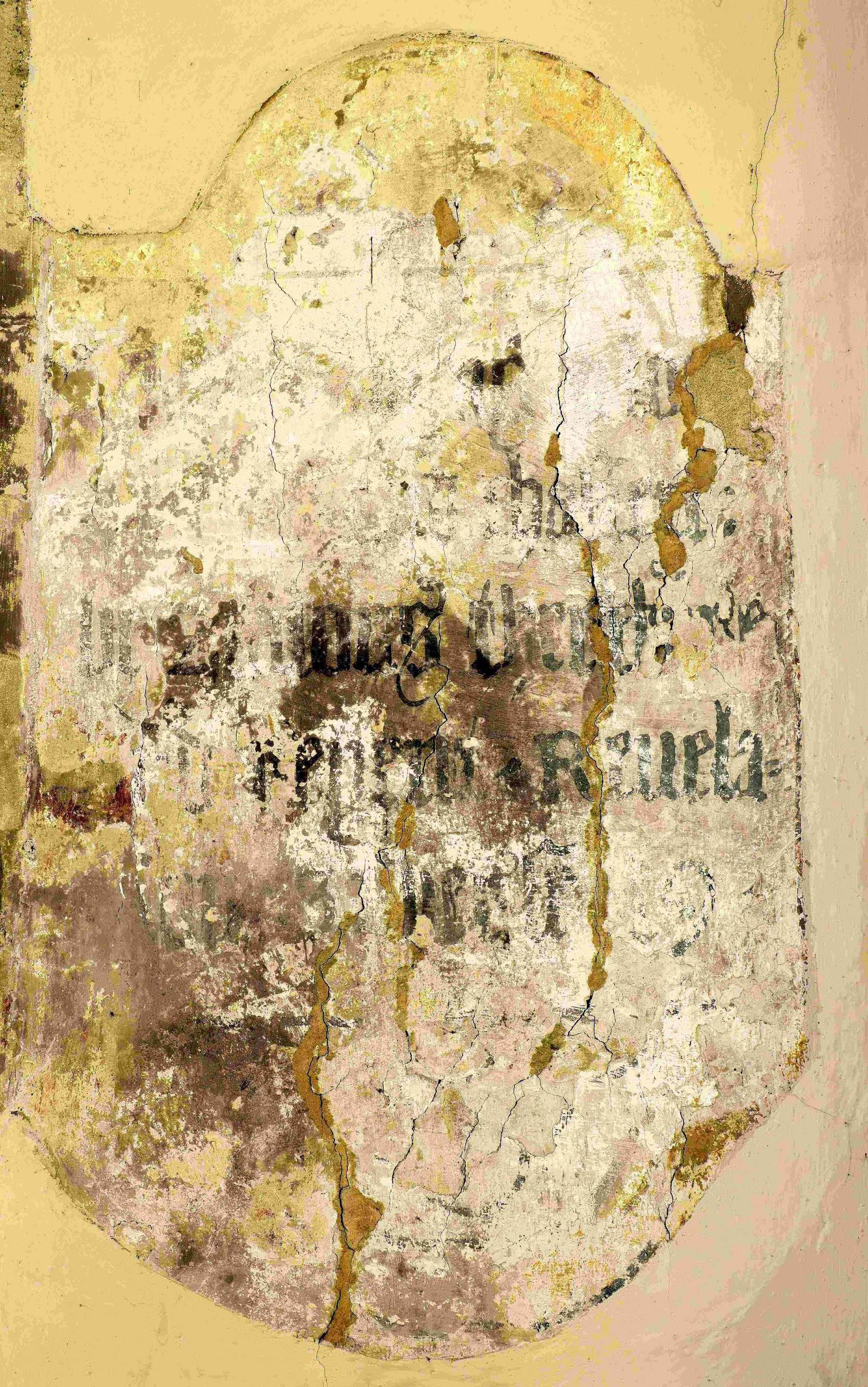
Black-letter wall painting in aisle
The black letter text here is from Revelation 3, v 19: “As many as I love, I rebuke and chasten: be zealous therefore, and repent.”
Where the east-most pier arch touches the east wall, you will see another trace of mid-13th century “branch work” painting.
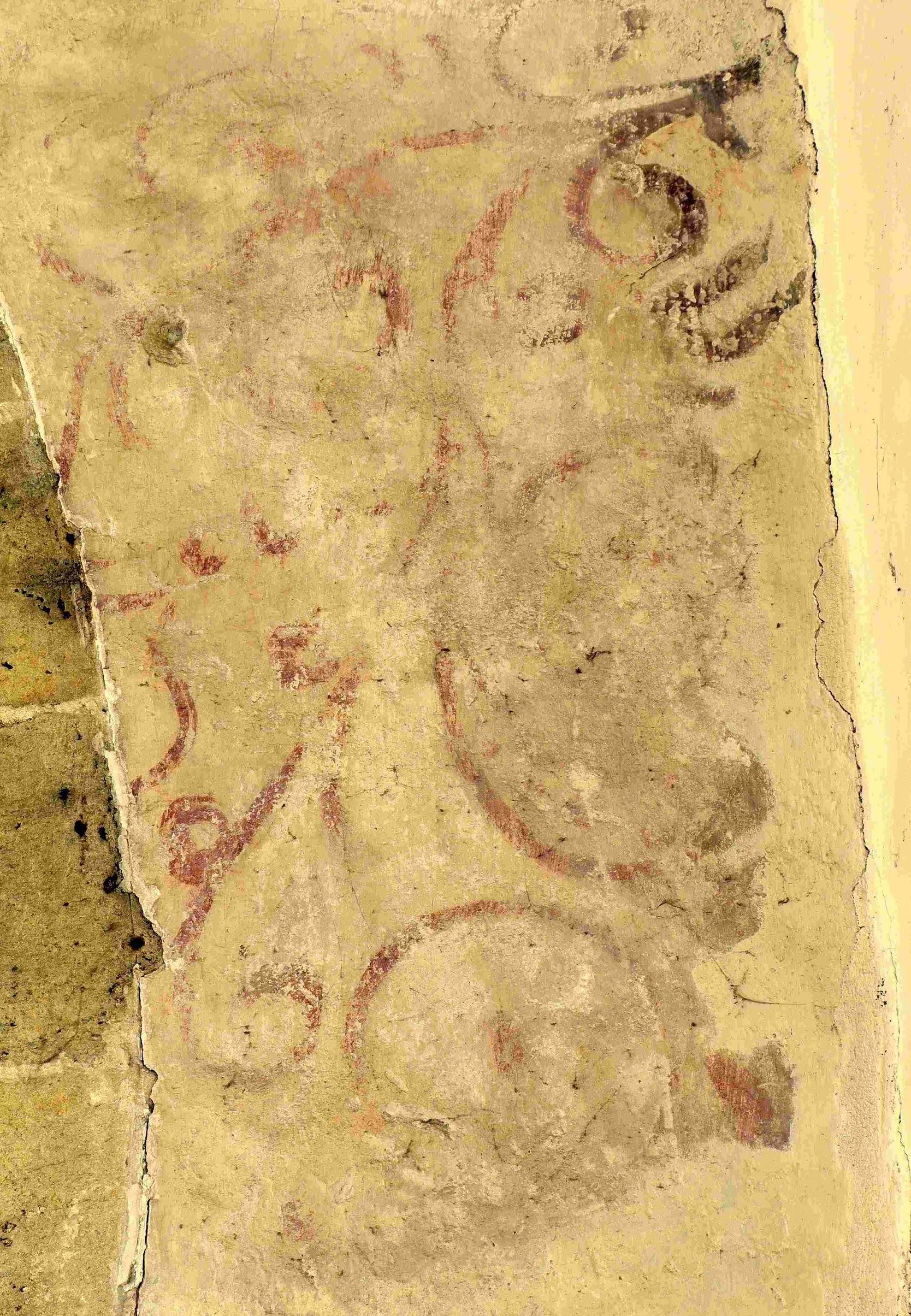
Branchwork painting
High up on the south wall of the aisle there’s a small circular mid-13th century painting, called “The Salutation”, which represents the meeting of Mary and Elizabeth (Luke 1:39-45).
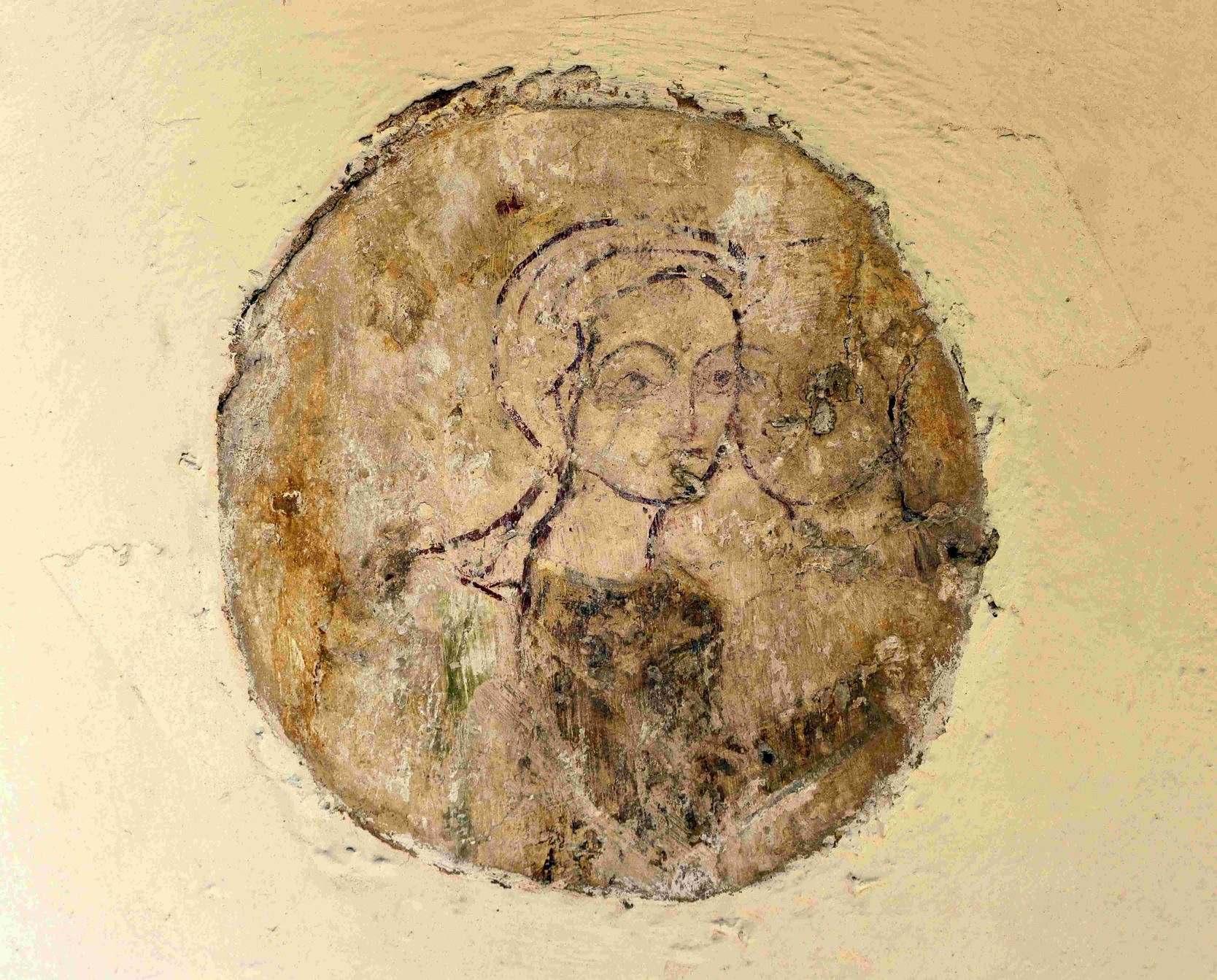
The Salutation
Consecration crosses
There are consecration crosses on the north wall of the nave and on the west wall to the left of the vestry door, incised in the limewash and painted in red ochre. These would have been anointed during the consecration of the Norman church by the bishop. They are always above shoulder level as they should not be brushed or touched by human hand.
-
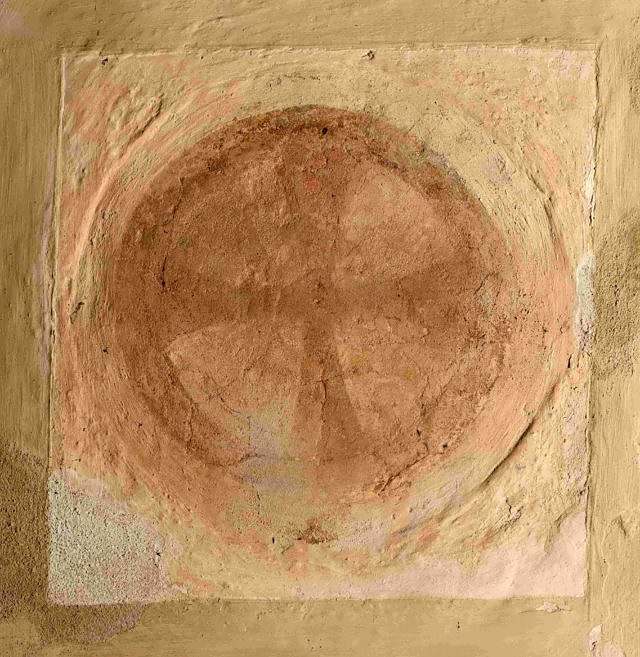
No caption
-
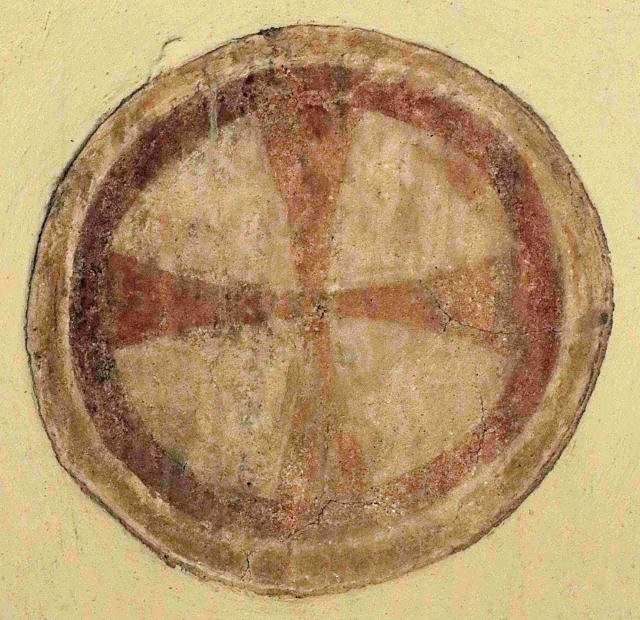
No caption
Two other consecration crosses on the aisle wall, to the west side of the south door, were obliterated in 1864. A large amount of internal plastering was removed then and much wall painting also, we must assume.